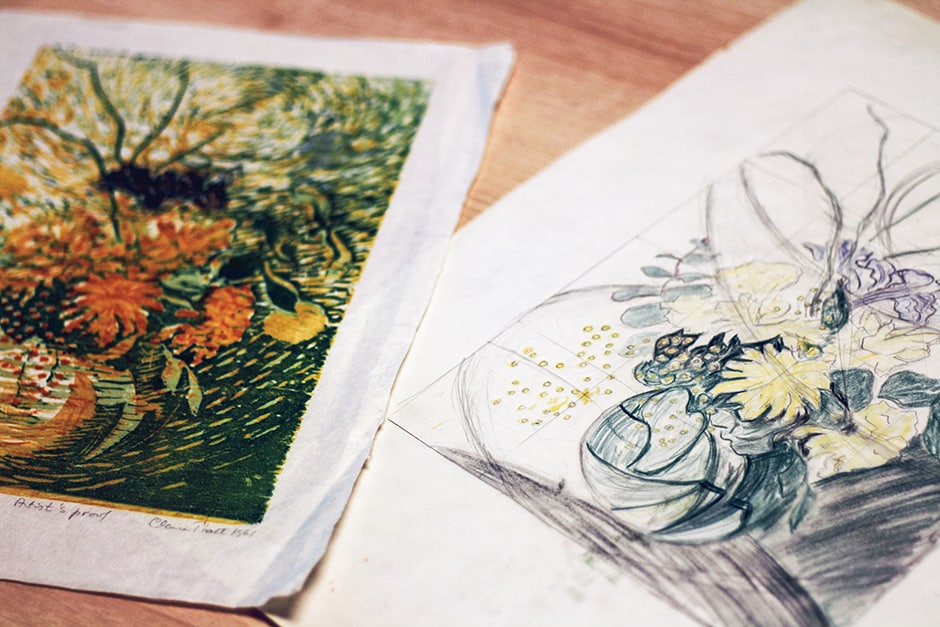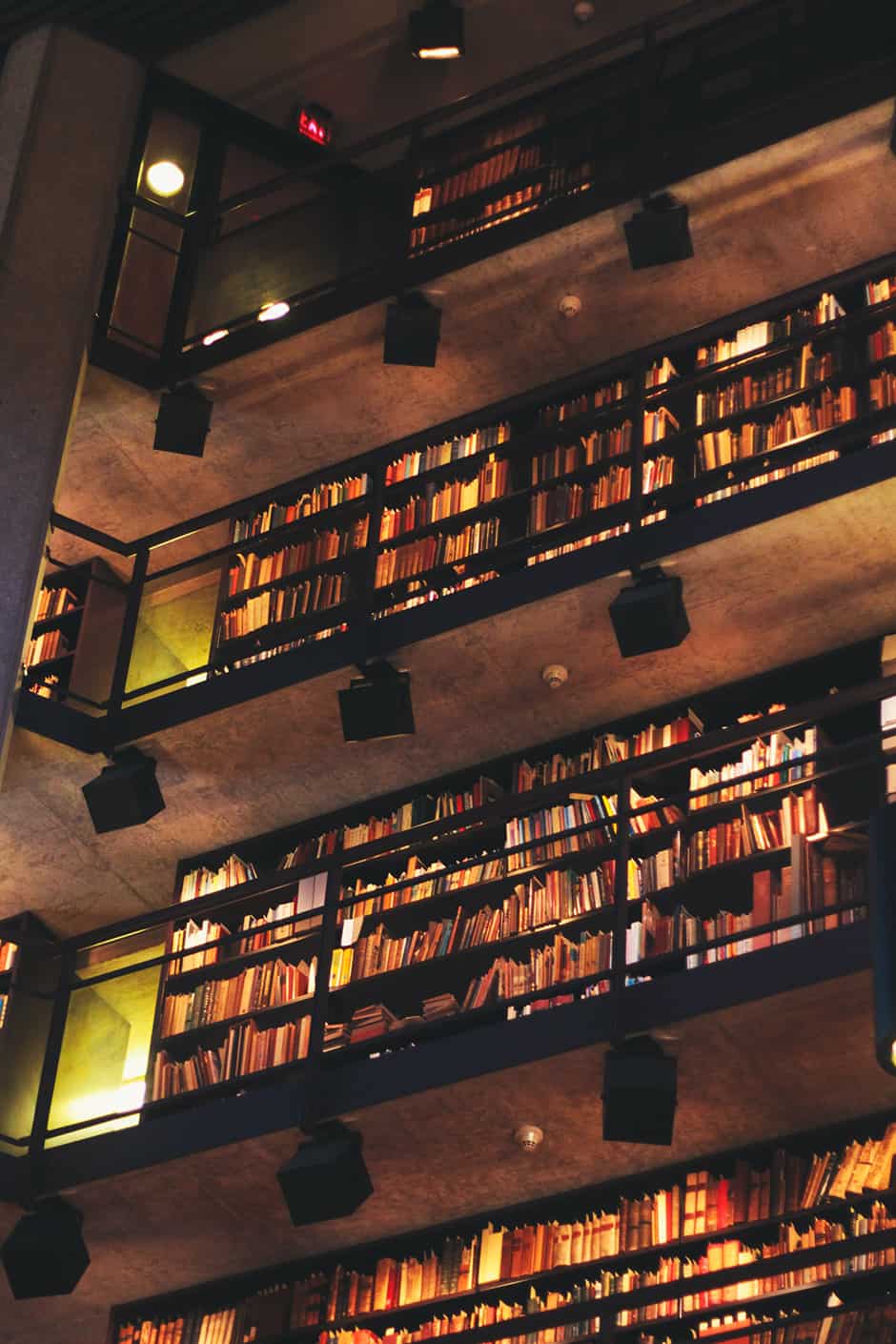On any given day, there is a small corner of Robarts Library that is darker and quieter than the rest. If you’re not looking, you’ve probably walked by it without noticing. But, if you’re smart, you’ve been inside.
This, of course, is the Thomas Fisher Rare Book Library, which juts out from the building onto the corner of St. George and Harbord. The lighting is dimmed inside this library to preserve the 800,000 rare books, manuscripts, and ephemera housed there. The library is open to the public and its staff believes wholeheartedly in access and outreach; the darkened entryway simply adds to the allure.
Deborah Whiteman, the head of the Department of Rare Books and Special Collections, says her boss’ mantra is, “we’re a library, not a museum.” She explains, “We welcome people to come in and have the experience, because this building is extraordinary architecturally and extraordinary in what it contains.” The experience is certainly there for those who look for it; I was lucky enough to handle a twelfth century gradual, or liturgical book. It was massive in size and closed with bronze clasps. It was created entirely by hand by several monks with a quill.
What is also incredible about these rare collections is that they make it possible to still do original research. Whiteman explains, “We’re living in a digital age; it’s wonderful. We can access a manuscript, a rare book, get any kind of information we want from our rooms at home. But is that the same as coming and looking at this 12th century gradual, and actually looking at the paper and the binding and the writing? I think they complement each other.”
The Fisher Library staff work hard to ensure people know what they offer; they have active social media accounts and create monthly exhibitions to showcase their materials. They offer tours, classes, and workshops to both undergraduate and graduate classes from U of T and other schools like George Brown, Ryerson, or the University of Guelph. They also encourage outside groups to participate, and on Doors Open Toronto last year, they had over 2,000 visitors in one day.
While Fisher is undoubtedly the largest, all of U of T’s 44 libraries offer special collections. The E.J. Pratt Library at Victoria University also contains many printed books, manuscripts, and papers; their special collections include materials from George Baxter, William Blake, G.E. Bentley, Canadiana, A.P. Coleman, Samuel Taylor Coleridge, Northrop Frye, Norman Jewison, E.J. Pratt, Alfred, Lord Tennyson, and Virginia Woolf.
Roma Kail, the Acting Head of Reader Services at E.J. Pratt, did her graduate work on romantic literature. As she explains, “My supervisor at the time made trips to Pratt Library to use the Samuel Taylor Coleridge Collection. Before I ever knew I’d be a librarian I was smitten by that collection, all the way over in -40-degree Saskatoon. I still have to catch my breath when I realize that I now work in the same building as [Coleridge]’s notebooks and letters.”
Kelly Library at St. Michael’s College is also known for its rare books, some of which date back to 1475; the collection houses French and Italian literature, Catholic theology, and Irish and Scottish materials. Noel McFerran, the Theology and Rare Books Librarian, explained their collection to me. “We have hundreds of French plays from the nineteenth century; many of these are the only copy in North America. We have German and Latin pamphlets by the Catholic theologians who were debating with Martin Luther and other Protestants in the sixteenth century.”
Gabrielle Earnshaw, Head of Manuscript Collections and Archivist of the Henri J.M. Nouwen Archives and Research Collection, also offered a take, saying, “We are also very proud of our collection of the nineteenth century French writer Emile Zola, including the most comprehensive collection of his letters (in facsimile) in the world. Complementing the Zola collection and the nineteenth century French book collection is an archive related to nineteenth century French theatre and the playwright André Antoine.”
A personal favourite of McFerran’s and Earnshaw’s? “There are so many to choose from but we love the hand-written journals of writer Sheila Watson from her time in Paris in the 1950s. They offer an intimate portrait of a writer in a foreign city. They are brimming with astute observations about French culture and art as well as reflections on the craft of writing.”
The East Asian Library, tucked away in Robarts on the often-forgotten fourteenth floor, also holds rare volumes. Stephen Qiao, the Acting Director of Chinese Studies and Collection & Services, described the materials housed there. “EAL has one of largest Chinese rare book collections in North America. We hold over 3,000 titles, 40,000 volumes of Chinese rare books dated from Southern Song Dynasty (1127–1279) to Qing Dynasty (1616–1911). The library also has special collections on Asian Canadian studies, Tibetan studies (in Tibetan language), collections from China’s Republic period (1911-1949), manuscripts of Korean farmers, North Korean film reels.”
The resources available on our campus are innumerate; this is unsurprising when you are ranked the third best library system in North America. Also worth noting is that the librarians at U of T are also some of the best and brightest, always happy to help students — an important reminder on a busy and at times daunting campus. For both the literary scholars and scientists among us, the importance of these special collections is easy to understand. As Whiteman told me, “They will be here longer than we are, and we have to preserve them.”






